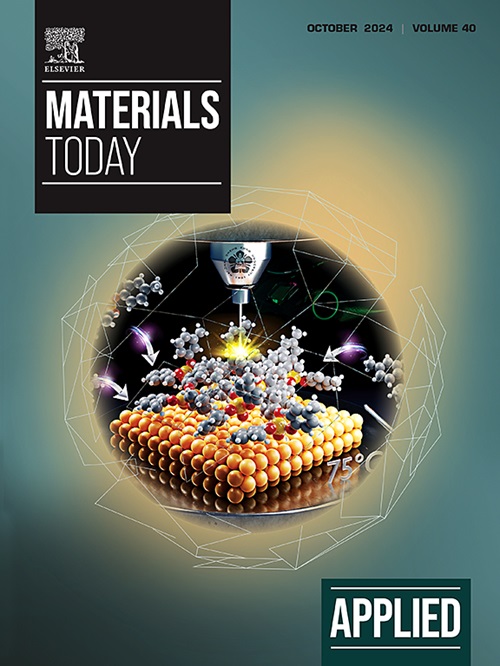MAX phases: Unexpected reactivity under impact
IF 6.9
2区 材料科学
Q1 MATERIALS SCIENCE, MULTIDISCIPLINARY
引用次数: 0
Abstract
This study reveals that MAX phase materials can exhibit extraordinary reactivity when subjected to impact loading. This previously unknown behavior was discovered and examined in a case study of TiSiC subjected to Split Hopkinson pressure bar (SHPB) testing. The employed methodology integrated SHPB coupled with thermal measurements and ex-situ spectroscopic analysis, yielding crucial quantitative insights into MAX phase reactivity and mechanical impact response. We observed a substantial release of high energy in the form of elevated temperatures upon impact and disintegration of the MAX phase. Surprisingly, it was found that oxidation, usually the prominent contributor to reactivity, only plays a secondary role. Instead, microstructural transformation emerges as the primary source of energy release. It is postulated that the transformative kinetic mechanism involves rapid kinking, delamination, and bond breakage within the bulk material. These findings shed light on the fundamental energetics of MAX phases and highlight their potential as versatile reactive structural materials.MAX 相:冲击下的意外反应性
本研究揭示了 MAX 相材料在受到冲击载荷时会表现出非凡的反应性。在对 TiSiC 进行分体式霍普金森压力棒(SHPB)测试的案例研究中,发现并检验了这一之前未知的行为。所采用的方法将 SHPB 与热测量和原位光谱分析结合在一起,对 MAX 相反应性和机械冲击响应产生了重要的定量洞察。我们观察到 MAX 相在受到冲击和解体时以升温的形式释放出大量高能量。令人惊讶的是,我们发现通常对反应性起主要作用的氧化作用只起次要作用。相反,微结构转变成为能量释放的主要来源。据推测,转化动力学机制涉及块体材料内部的快速扭结、分层和断键。这些发现揭示了 MAX 相的基本能量学,并凸显了它们作为多功能活性结构材料的潜力。
本文章由计算机程序翻译,如有差异,请以英文原文为准。
求助全文
约1分钟内获得全文
求助全文
来源期刊

Applied Materials Today
Materials Science-General Materials Science
CiteScore
14.90
自引率
3.60%
发文量
393
审稿时长
26 days
期刊介绍:
Journal Name: Applied Materials Today
Focus:
Multi-disciplinary, rapid-publication journal
Focused on cutting-edge applications of novel materials
Overview:
New materials discoveries have led to exciting fundamental breakthroughs.
Materials research is now moving towards the translation of these scientific properties and principles.
 求助内容:
求助内容: 应助结果提醒方式:
应助结果提醒方式:


